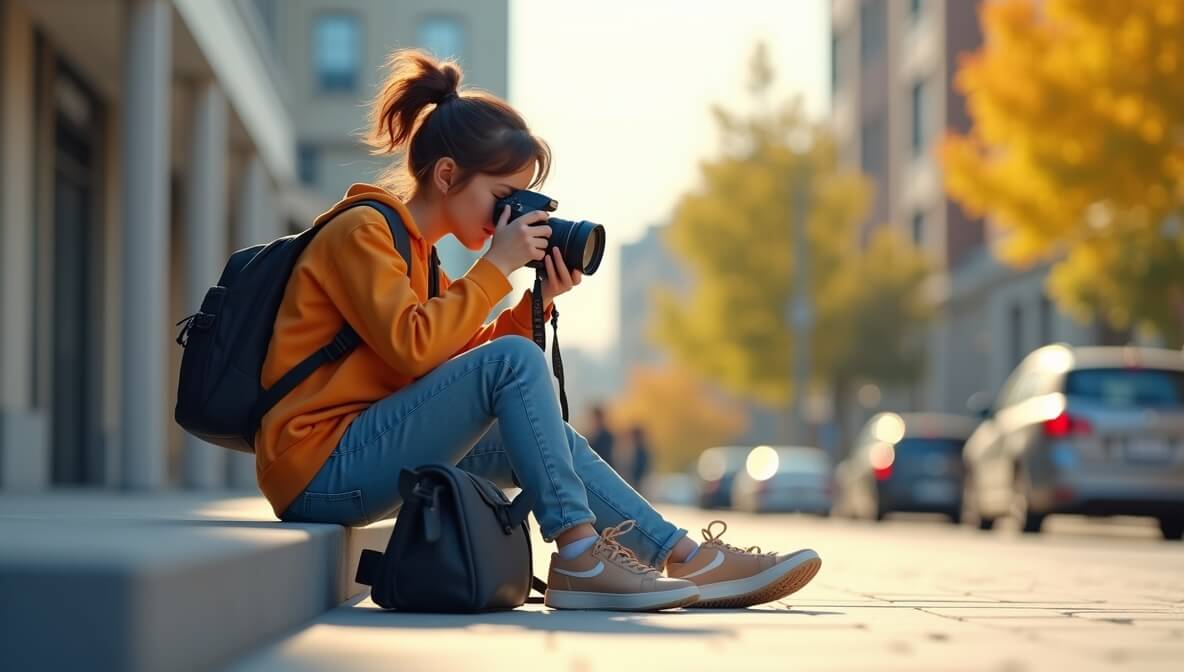May 23, 2025

Getting into photography doesn’t have to break the bank. Whether you're exploring your creative side, starting a content creation journey, or capturing memories on your travels, choosing the right affordable camera can make all the difference. This guide highlights the best entry-level cameras for 2025 that combine excellent image quality, user-friendly features, and the potential for growth—without burning a hole in your wallet.
For beginners, the ideal camera offers a blend of simplicity and versatility. It should help you get started with ease but also allow room for growth as you gain more experience. Here are key features to look for in a beginner-friendly camera:
Whether you're into portraits, travel, or product photography, choosing the right beginner camera gives you the foundation to experiment and develop your skills.
Check out the best beginner cameras of 2025 for a solid starting point and ensure you're set for success.
The following cameras provide a fantastic balance of affordability, quality, and functionality, making them ideal for aspiring photographers. These are budget-friendly options with excellent value for money:
A classic DSLR choice that provides great image quality with its 24.1MP sensor, built-in Wi-Fi, and an intuitive interface. Perfect for those who want a traditional DSLR experience with enough flexibility for growth. The Canon Rebel T7 is ideal for learning manual controls, and its DSLR body makes it easy to upgrade as your skills progress.
This camera is praised for its ease of use, great battery life, and excellent performance in both photography and video. The 24.2MP sensor delivers crisp images, and its Guide Mode walks you through shooting basics, making it ideal for beginners who want to take it slow and understand the basics.
Ideal for content creators and aspiring vloggers, the Sony ZV-E10 offers fast autofocus, a flip-out screen, and interchangeable lenses. With a 24.2MP sensor and a compact, lightweight design, it’s perfect for those who want to capture both stills and video without carrying a heavy DSLR.
A stylish and compact mirrorless camera, the Fujifilm X-A7 is known for its fantastic color science and vibrant image output. It has a 24.2MP sensor and a fully articulating touchscreen, making it a solid choice for selfies, vlogging, and portraits. If you’re looking for something sleek but still powerful, the X-A7 fits the bill.
Great for travel and street photography, the Panasonic Lumix GX85 features a 16MP micro four-thirds sensor and 5-axis stabilization. It also supports 4K video and high-quality stills. If you're looking to shoot in various lighting conditions and want portability, this camera is a versatile option for photographers on the go.
For a detailed comparison of DSLR vs Mirrorless cameras and choosing the right type for your needs, check out our guide on how they stack up.

Even when you’re on a budget, don’t settle for a camera that lacks these essential features:
Learn more about RAW vs JPEG and how to utilize both formats as you start your photography journey. RAW is particularly useful for beginners who are looking to explore post-processing and enhance their shots with editing software.
Once you’ve selected your camera, consider these budget-friendly accessories to enhance your photography setup:
Once you’re comfortable with your camera and have mastered the basics, you can explore ways to turn your passion into a business or side income:
Pricing your services correctly is also crucial, so check out our guide on how to price your photography services to ensure you’re setting competitive yet profitable rates.
Getting started in photography is exciting, and the right equipment can lay a strong foundation for your creative journey. With an entry-level camera that suits your style and budget, plus the accessories and knowledge to back it up, you're on your way to mastering photography and even turning it into a business. Whether you’re capturing your everyday life or creating professional-level content, there’s always room to grow and experiment. So grab your camera, start shooting, and let your creativity flourish!
Stay up to date with the newest tips, gear reviews, and step-by-step guides to elevate your photography journey from home and beyond.